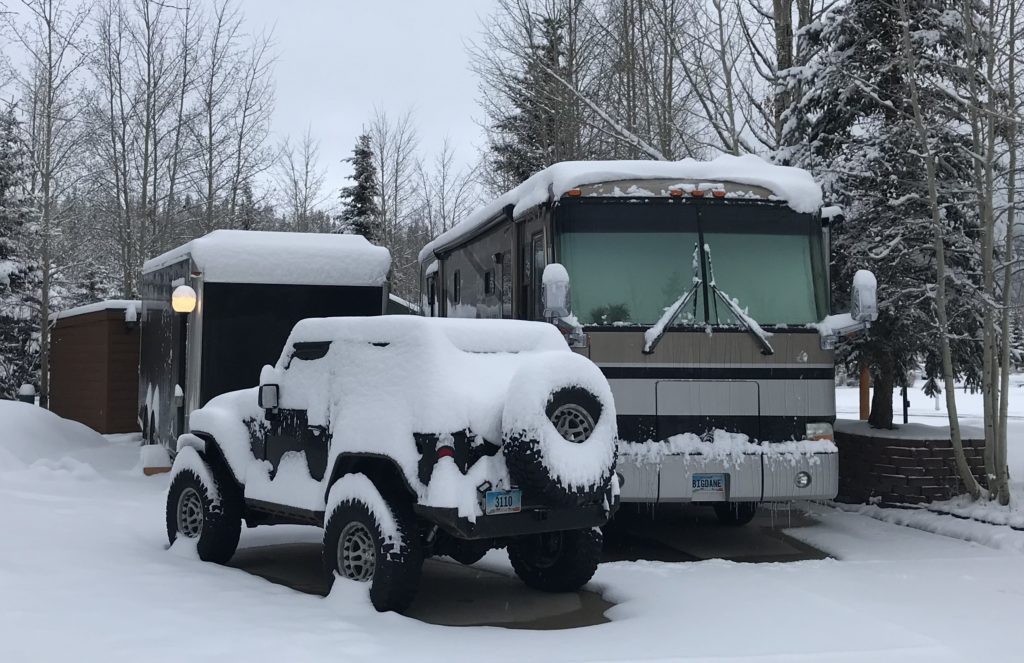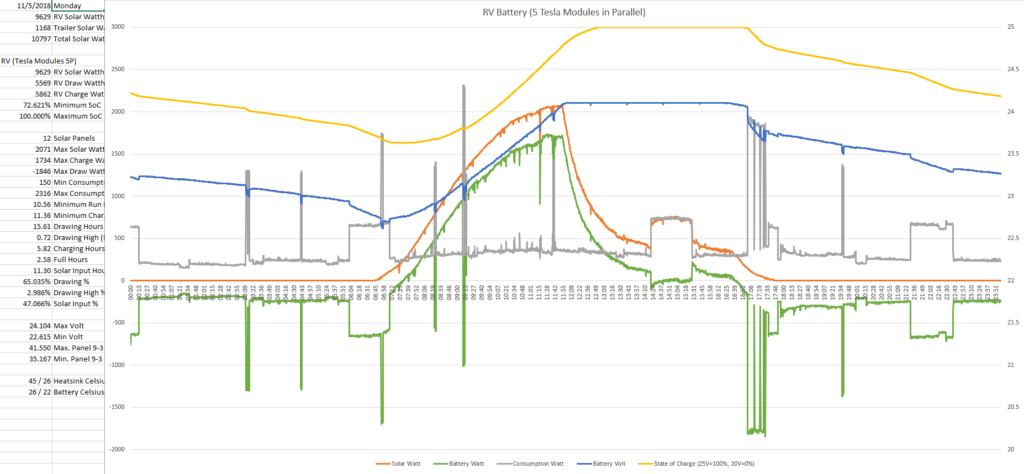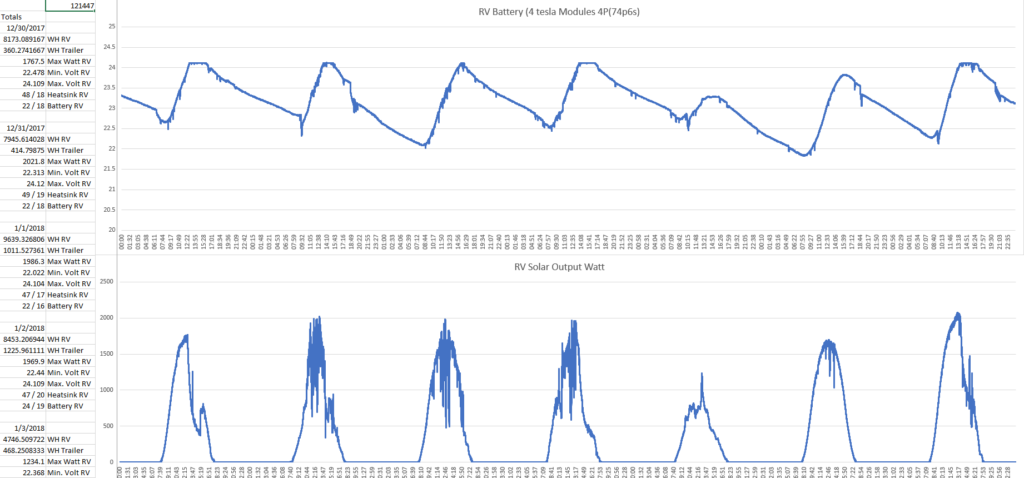Beaver Santiam 2004
40′ long and with close to 300 feet of living space and underfloor storage is this like a small apartment, except we, of course, can move the house to follow the seasons. The 330 HP Cummings Diesel is a little stressed in the mountains, but in general, is doing a good job. 2004 Beaver Santiam Brochure.

Originally when we bought the Motorhome used in 2010 was a 2000 Watt Modified Sine inverter, 4 Flooded Lead Acid Batteries, and no Solar Panels installed. Over the years has this been upgraded to allow 100% Off-Grid living with only water and waste tank capacity being a limiting resource.
A typical day
Going about our business without thinking about the power used is a typical day 10-12 kWh. This includes 3 kWh used for the electric water heater that we typically use on propane on shortest days in the winter. The residential refrigerator is the second largest power consumer with 1.5-2 kWh each day. We have a lot of electronics and networking gear consuming 1-1.5 kWh each day.

In the summer can we generate more than 30 kWh on a sunny day and even when completely overcast 20% of that. Using the air conditioning can be done with no problem when using a 4000 Watt inverter. If we run one of the two roof air conditioners 24/7 in 100 Fahrenheit have we been using 10-15 kWh extra per day. We, in general, try to stay in places that are 75-80 Fahrenheit during the day then is it only hot days that require 4-8 hours of air condition. With the amount of power we generate in a summer day can we use the electric fireplace for heat in the morning and still recover the power the same day. The sun provides power in the summer more than 50% of the day and we only need 5-6 kWh of stored energy overnight.
In the winter is when we need to conserve energy some days. On January 1st, 2018, that is one of the shortest days of the year, was 11 kWh produced. This is still enough to provide all we energy we need, typically is propane used for hot water, cooking and heating. In the winter is 5-7 kWh used each day. Only 30% of the day is the sun providing enough energy to run the Motorhome and we use 4-5 kWh overnight.

With our 20 kWh house battery and typical daily use of 5-7 kWh can we stay 3 days in complete darkness without charging. Even when completely overcast in the winter for the whole day is ~2 kWh generated, this extends our time before we need to recharge from the generator to 5 days or more.
House Battery
With 5 Tesla Modules from a Model S car is 20 kWh of useful electric storage available, same as 32 Lead Acid batteries in the space of 8 Lead Acid batteries. Learn more.
Solar Charging
A total of 13 SolarWorld XL 345-Watt panels are mounted on the Motorhome and Trailer. Anything from 6 panels (2070 Watt) to 13 panels (4485 Watt) can be used for charging the house batteries. Learn more.
Inverter/charger
When using 24 Volt house battery system is a Magnum MS4024 with 4000 Watt the standard. The stronger Inverter easily starts Roof Air Conditioners. Learn more.
Raspberry Pi monitoring
A Raspberry Pi computer measures more detailed information and save the status every 15 seconds. With the ModBUS interface is it possible to communicate directly with the MorningStar and MidNite solar controllers. Learn more.
Engine Battery charging
We use the two 12 Volt Engine Batteries for Hydraulic Leveling after we shut the engine off. To maintain full charge is a small solar setup. Learn more.